
I first saw Rajyashri Goody at a performance site a few months ago in Kochi. The venue was hosting many performances which ran simultaneously and was extremely crowded – it was difficult to discern whether it was a space for the viewing of live acts or a social gathering. There were performances which had elaborate set pieces, there were performances which were situated in odd places, and there were installations without a performer. Between this din and clamour, a small group of people had gathered around a figure crouching on the ground dressed simply in jeans and a t-shirt, repeating, ad infinitum, the act of turning an assortment of bowls upside down.
Goody’s performance Turn Your Bowl Into A Stupa (2022) was premised on transforming a simple, replicable, everyday act of flipping over a functional and universal object such as a bowl into a symbol for revolutionary thinking – the hemispherical form recalling the structure of a stupa, a sacred site in the Buddhist tradition. As Goody turned over bowls through the evening, she read out excerpts of poetry, and held conversations with those gathered around, the domed shape of the bowl and stupa providing inlets to think of Buddhism and its tenets of equal moral worth of all persons. In the overwhelming extravagance of mega art events, I was struck by the power of intimacy and contact a performance like this could evoke. Weeks later, standing in my own kitchen, I found myself turning bowls upside down and realising how seamlessly Goody had united the ten thousand ceramic forms that made her installation Is the water chavdar? with the ubiquitous, ordinary bowls she upturned at Kochi.
This story is from the April 2023 edition of Art India.
Start your 7-day Magzter GOLD free trial to access thousands of curated premium stories, and 9,000+ magazines and newspapers.
Already a subscriber ? Sign In
This story is from the April 2023 edition of Art India.
Start your 7-day Magzter GOLD free trial to access thousands of curated premium stories, and 9,000+ magazines and newspapers.
Already a subscriber? Sign In

Parts, Wholes And The Spaces In Between
Sonal Sundararajan introduces Samira Rathod's free-spirited and rebellious explorations in the world of architecture, furniture and design.

"The Fine Art of Going to the Pictures."
Dr. Banerjee in Dr. Kulkarni's Nursing Home at Chemould Prescott Road brings together 26 paintings featuring a series of dramatic scenes from Hindi and Bengali films. In conversation with Abhay Sardesai, artist Atul Dodiya talks about childhood trips to movie halls, painted figures gripped by tension, and the closeness and remoteness of cinematic images.
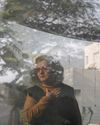
"To Finally Have Something of Your Own to Mine."
Dayanita Singh is the recipient of the coveted 2022 Hasselblad Award. Keeping the photograph at the centre, she speaks to Shreevatsa Nevatia about books, book objects, photo novels, exhibitions and museums.

OF DIVINE LOSS
Shaurya Kumar explores the relationship between the subject and object of devotion, finds Aranya.
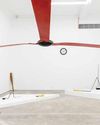
THE PAST AND ITS SHADOWS
Neha Mitra visits two shows and three artists in Mumbai.
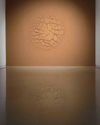
FORCE OF NATURE
Alwar Balasubramaniam dwells on absences and ephemeralities in his new work, states Meera Menezes.
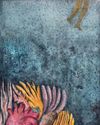
SHAPES OF WATER
Devika Sundar's works delineate the murky, malleable boundaries between the human body and the organic world, says Joshua Muyiwa.

INTIMATIONS OF INTIMACY
Sunil Gupta shares his journey with Gautami Reddy.
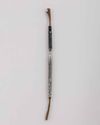
THE FRACTURED PROSPECT
Nocturnal landscapes as ruins in the making? Adwait Singh looks at Biraaj Dodiya's scenes of loss.

TEETERING BEYOND OUR GRASP
Meera Menezes traces Mahesh Baliga's journey from Moodabidri to London.